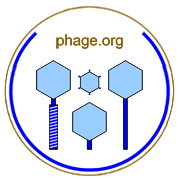

Chapter authored by Benjamin K. Chan and Stephen T. Abedon published in 2012.
Chan, B. K. and S. T. Abedon. 2012. Bacteriophage adaptation, with particular attention to issues of phage host range, p. 25-52. In: A. Quiberoni and J. Reinheimer (eds.), Bacteriophages in Dairy Processing. Nova Science Publishers, Hauppauge, New York. [Publisher]
Abstract: Bacteriophages (phages), the viruses of bacteria, are ecological entities that evolutionarily adapt to their hosts along with the extracellular environments that they inhabit. Adaptations can be observed in terms of phage survival characteristics, rates of bacterial acquisition (adsorption rate constant), infection durations (a component of generation time), and overall infection fecundities (burst size). These adaptations can impact rates of phage population growth as that occurs over the broader environment, that is, change in phage densities as a function of time (P'). Shorter generation times, greater infection fecundities, and greater survival characteristics all can give rise to a greater P' and, in terms of dairy processing, the greater P' then the sooner the impact of phage contaminants on fermentation properties. A second and related measure of phage adaptation, that also combines multiple elements of phage biology, is what we call an effective burst size (EBS). These are those phages derived from an infection's absolute burst size (ABS) which, given exposure to susceptible hosts, succeed in initiating successful new infections. Another important measure of phage adaptation is a culture's total phage yield (TPY). Here we discuss phage evolution particularly in terms of phage adaptations that enhance P', EBS, or TPY, and as informed, in part, by classical (macro) ecological concepts. We consider in particular issues pertaining to the evolution of phage host range.
Contact web master. Return to terms.











